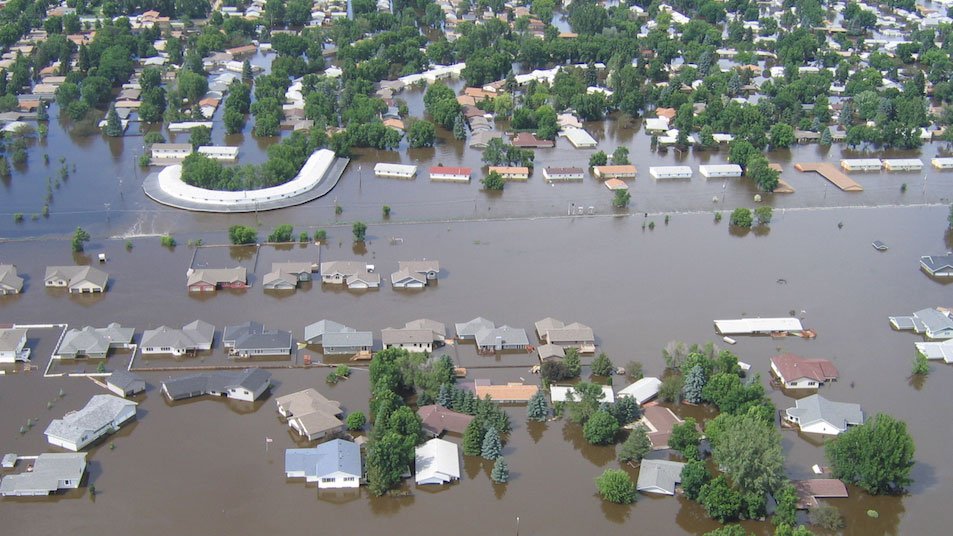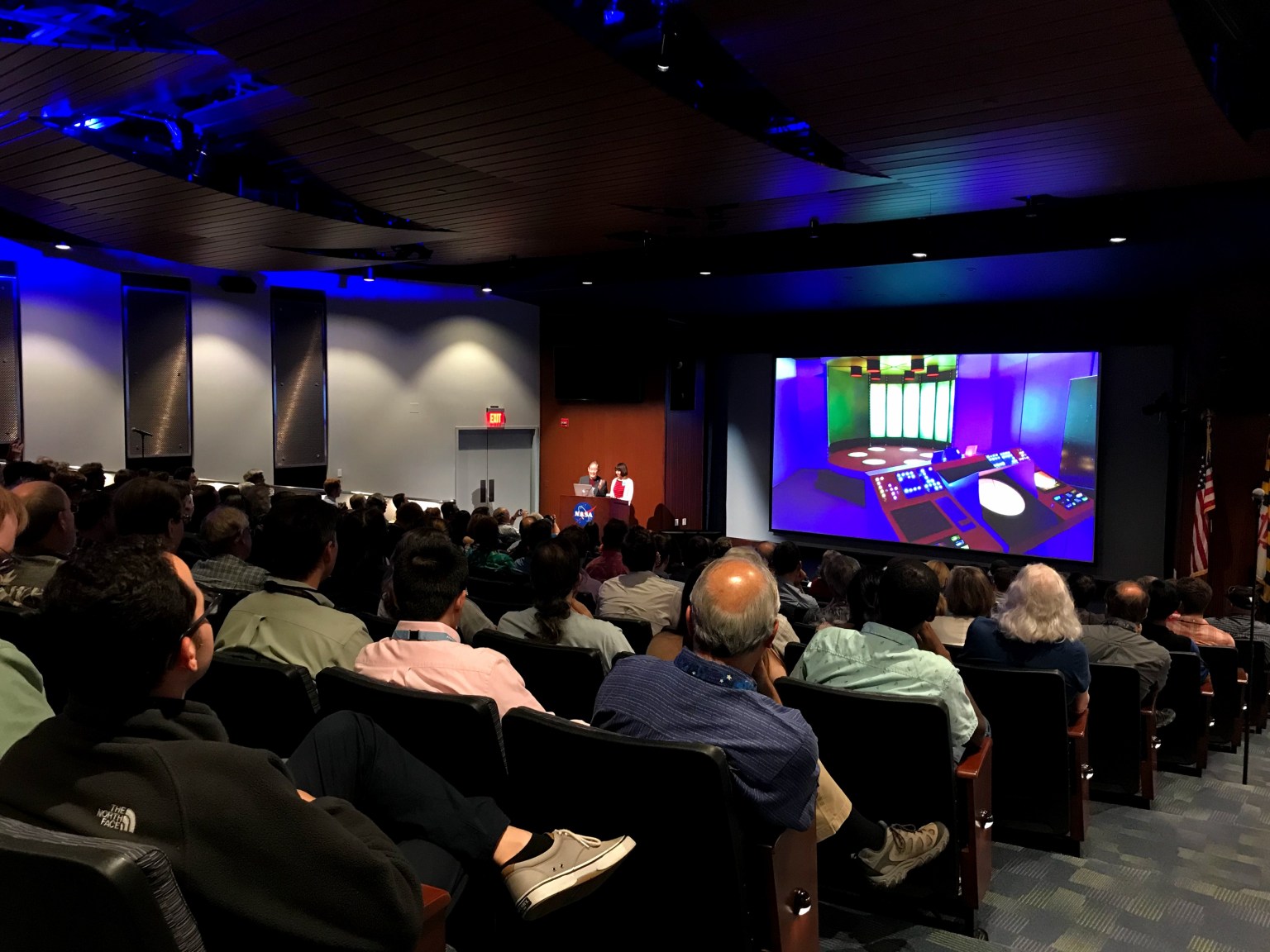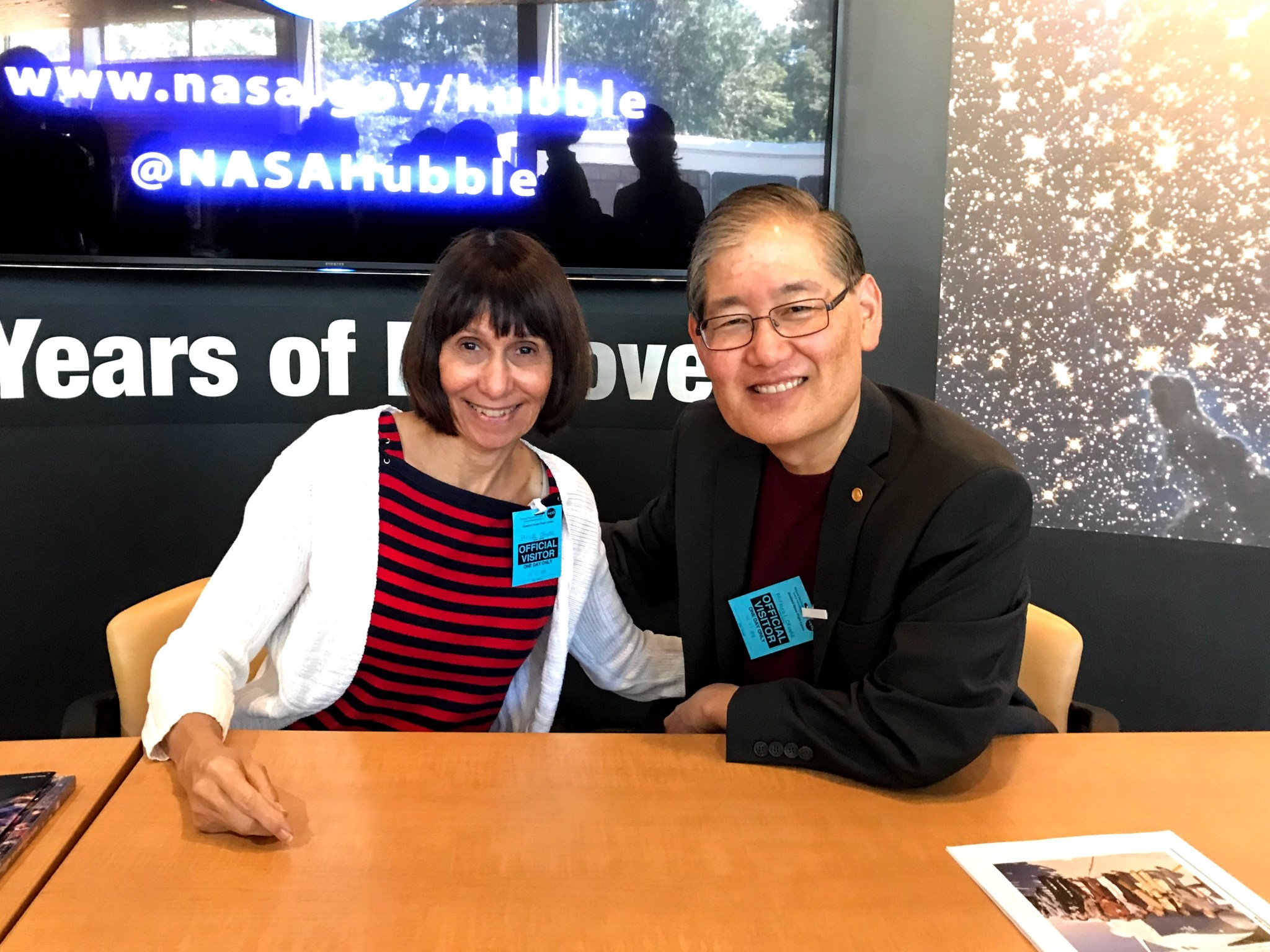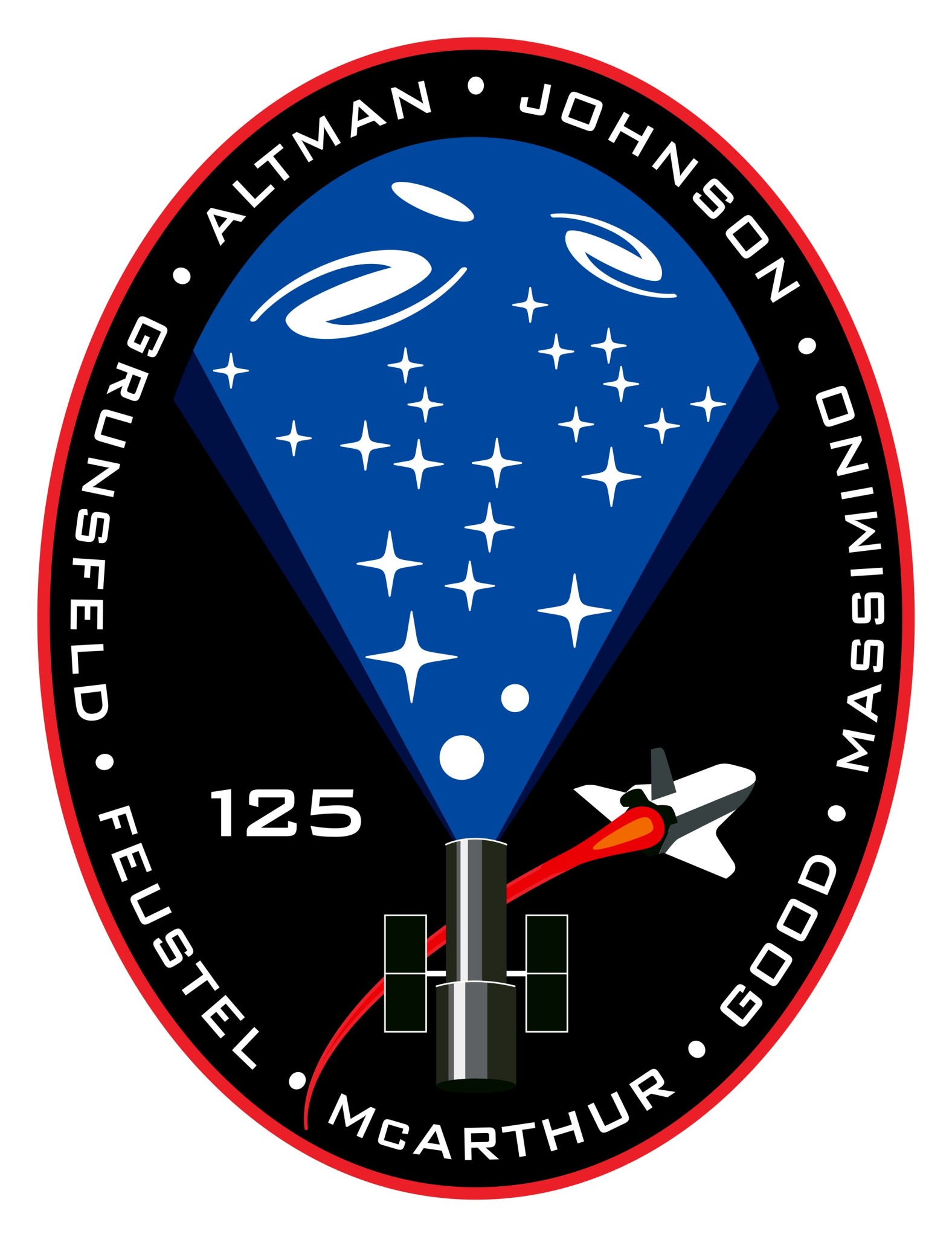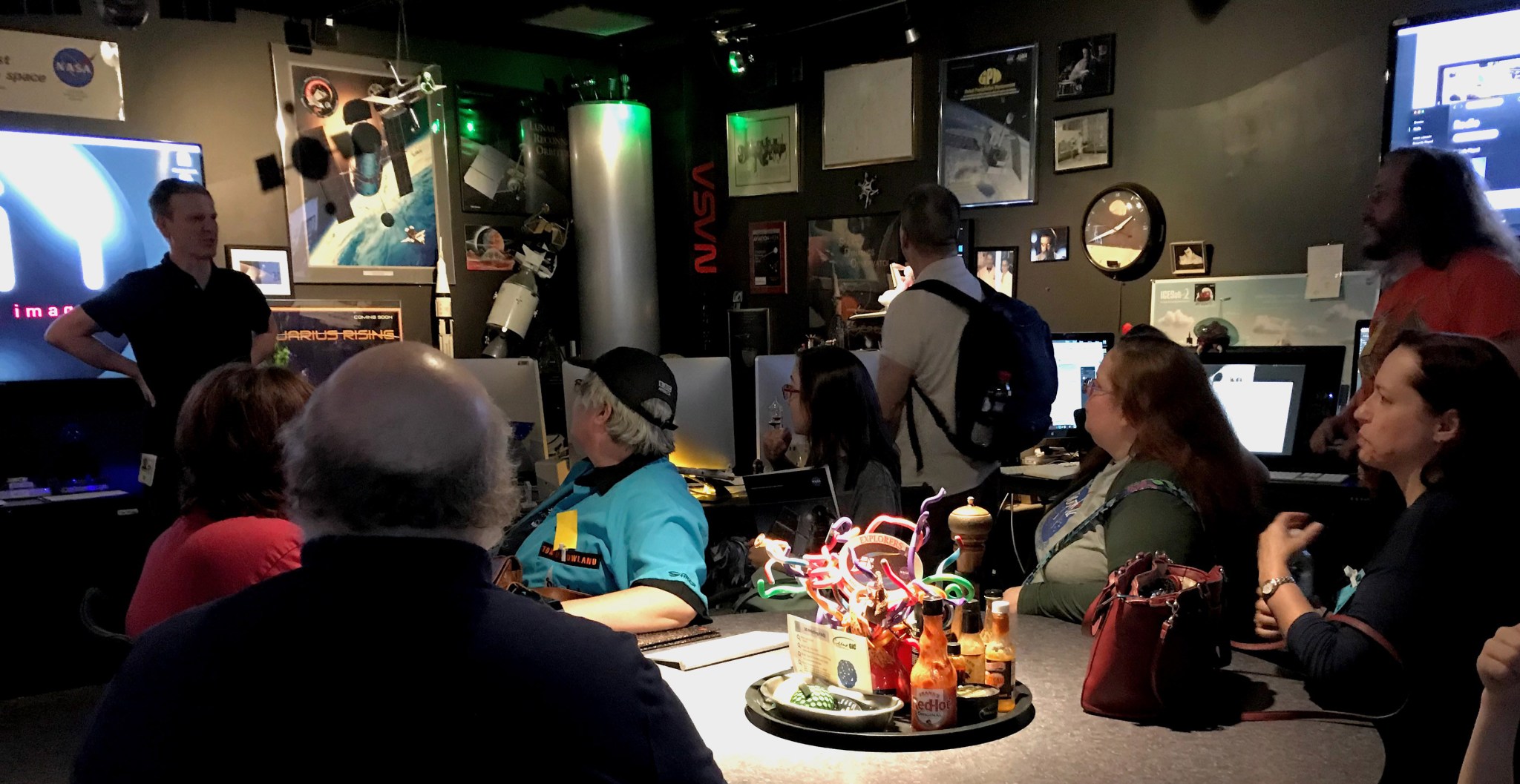A group of enterprising science fiction writers made a voyage of discovery to NASA on July 9. The visit included a tour of the real-world facility that drives NASA’s space exploration and coincided with a presentation by the noted “Star Trek” graphic designers, artistic consultants and technical experts Michael and Denise Okuda.
These writers were panelists at the annual fan-run “Shore Leave” science fiction convention in Baltimore. A short drive away, NASA’s Goddard Space Flight Center in Greenbelt, Maryland, pushes the boundaries of what humanity knows about the real final frontier.
“The Okudas were chosen to present at Goddard since they have not only an incredible depth of knowledge regarding Star Trek in all its incarnations, but also have done work for the Smithsonian and for NASA itself,” said Ken Carpenter, Hubble Space Telescope operations project scientist, who arranged the visit. “They are thus in a wonderful position to explore the interconnections between the worlds of the imagination and the real exploration of the universe that NASA enables. The recent publications of the Okudas’ massive ‘Star Trek Encyclopedia’ and the ‘Roddenberry Vault’ Blu-Ray set made their visit particularly timely.”
The Okudas presented some of their work designing sets, props and technology for Star Trek films and TV shows, discussing the relationship of inspiration that exists between art and science. They also discussed the challenges of helping to maintain the shows’ sense of scientific realism.
Denise Okuda noted that while real science is often a lot of rigorous work, she emphasized that equally important to science is the first step, “curiosity and imagination.” Michael added, “I think that this is part of science fiction’s most important value. Our stories may not always have strict scientific or technical validity [but] Star Trek encourages viewers to stretch their imaginations and their creativity.”
“Mike and Denise Okuda, with the work they have done on television and film, bridged science fiction and science with their work on mission patches,” said Robert Greenberger, a writer and editor whose career has included editing the Star Trek line at DC Comics for eight years. “There remains a strong highway between the science and science fiction communities with equal measures of admiration. Listening to them speak about ‘Visions of the Future’ certainly strengthened those connections.”
Michael Okuda designed control panels, logos and alien languages for four Star Trek shows and several movies, beginning with 1986’s “Star Trek IV: The Voyage Home.” He co-wrote the “Star Trek Chronology” and “Star Trek Encyclopedia” with his wife Denise, who worked as a video and computer playback supervisor and graphic artist for three Trek shows and several movies.
Michael has also designed emblems for NASA missions and projects, such as STS-125, the final astronaut servicing mission to the Hubble Space Telescope.
“I was a Star Trek fan as a child,” Mike Okuda said, “but my heroes were the astronauts and scientists who explored space in real life. So the opportunity to contribute — even in a small way — to NASA’s efforts is a tremendous honor.”
“I love their work,” said Kelli Fitzpatrick, one of the authors who visited Goddard. She was published in one of the Star Trek “Strange New Worlds” anthologies. “I am truly fascinated by the fact that they have designed art for both real world and fictional space missions. You can’t have the look of Star Trek without the creative work of the Okudas.”
The group toured some of Goddard’s flagship facilities, including Hubble Space Telescope’s mission operations center and the testing chambers that serve as proving grounds for satellites before their space flights begin.
“It’s such a thrill to meet so many real-life space explorers here at Goddard,” Denise Okuda said. “It’s especially inspiring to meet the bright, passionate, committed NASA interns, who represent the future of space exploration. We heard from so many of these extraordinary people who told us that Star Trek’s fictional voyages have helped to inspire their real-life career choices.”
The visit also included a stop at Goddard’s Conceptual Image Lab, where the center’s own team of artists produce animations and videos that illustrate NASA’s most cutting-edge science.
“Our artists in the CI Lab work closely with the world’s leading astronomers, scientists and engineers to bring scientific theories and concepts to life,” said Michael Lentz, the CI Lab’s art director. “We use a wide range of tools to create art and animation, including Renderman, the same software that is used by Pixar in feature films. These tools enable us to represent science as accurately as possible, while also stirring the imagination.”
The visiting creators discussed having found fuel for their own art in the science of NASA — science that is itself generated by questions of imagination.
“NASA is pushing the boundaries of what we know by testing theories and collecting data to help expand our knowledge base,” said Aaron Rosenberg, author of several bestselling series for children and adults, including Star Trek and Stargate novels.
“Science fiction uses existing knowledge and extrapolates from that to study societal effects,” he said. “The more NASA reveals about our world and our universe, the more that provides for us upon which to construct our visions of where society will go next.”
Related Links
- “Science-Fiction’s Most Famous Comm. Officer Visits Goddard” (March 2, 2012)
- “Star Trek’s George Takei Beams Down to Goddard” (June 5, 2008)
Banner image: Noted “Star Trek” graphic designers, artistic consultants and technical experts Michael and Denise Okuda visited NASA’s Goddard Space Flight Center in Greenbelt, Maryland, on July 9, 2018, as part of the Goddard Engineering Colloquium Series. They gave a presentation, “Visions of the Future: Graphic Design for Star Trek, NASA, and Beyond” to employees in the center’s Building 3 Goett Auditorium. Credit: NASA’s Goddard Space Flight Center/Jessica Merzdorf
By Tamsyn Brann and Jessica Merzdorf
NASA’s Goddard Space Flight Center, Greenbelt, Md.






